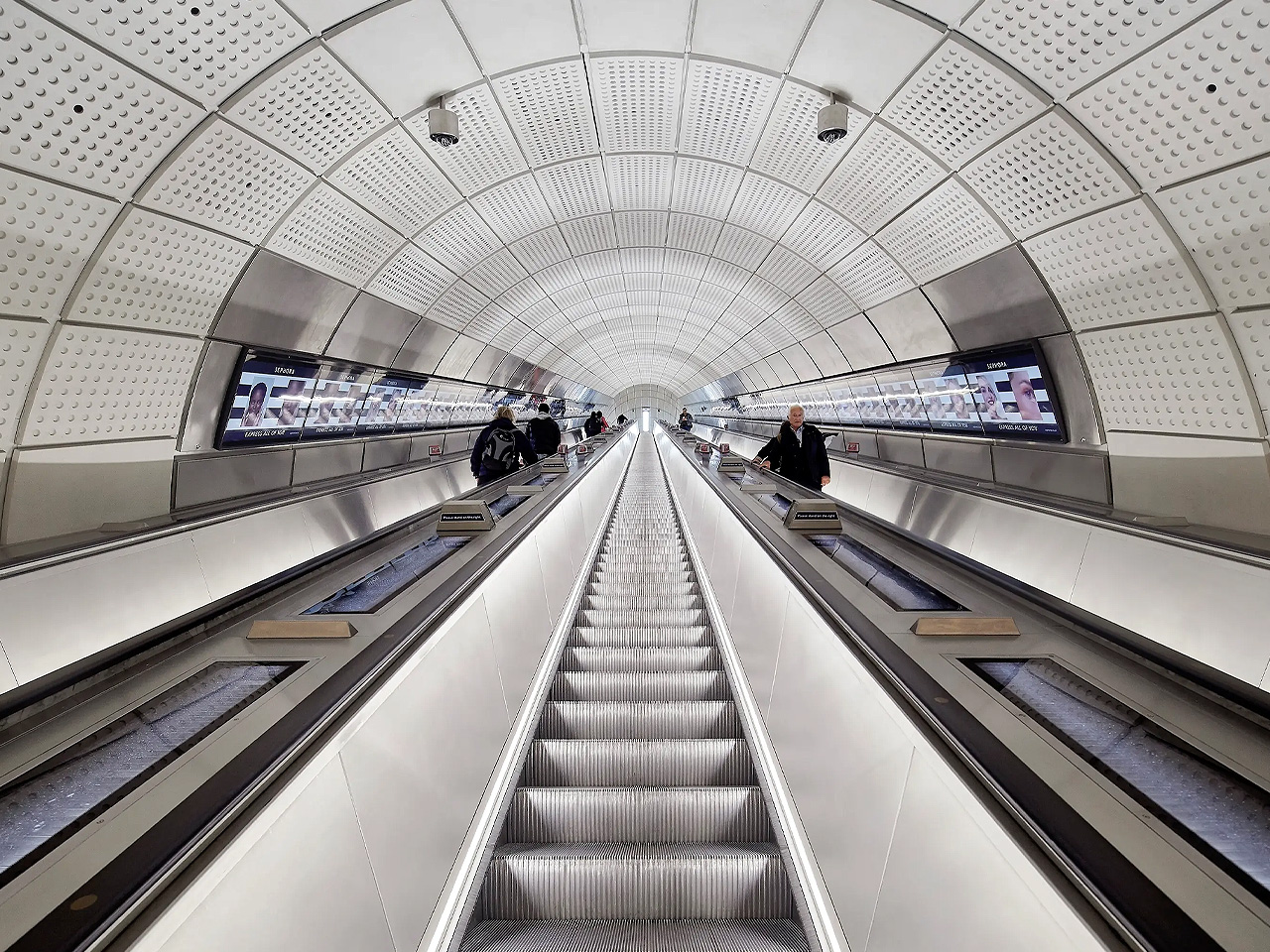
London’s Elizabeth Line rail transport network was recently named the winner of the 2024 Stirling Prize by the Royal Institute of British Architects (RIBA). It is the UK’s most prestigious architecture award, and the rail transport network won it for its passenger-centric philosophy, and its incredible engineering achievement. It was initially called the Crossrail but was renamed in honor of the late Queen Elizabeth II. It was designed by Grimshaw, Maynard, Equation, and AtkinsRéalis. The line connects Reading and Heathrow to Essex and South East London. It holds around 700,000 passengers every weekday.
Designer: Grimshaw, Maynard, Equation, and AtkinsRéalis
The line includes almost 62 miles of track and 26 miles of tunnels. While constructing the line, a bunch of historical artifacts were discovered – ranging from a Tudor bowling bowl to a prehistoric wooly mammoth. Around 6 million tonnes of earth was dug out to make space for the tunnels. The enormous amount of earth was transported to Essex and repurposed to build a new natural reserve. Passengers have been offered easy access from one platform to another by incorporating curving fluid lines. These guide them to the different sections of the stations, while the lighting moves between cool and warm tones, to relax them, and reduce the stress of family commute. However, according to BBC, passengers have had issues with overcrowding, delays, and some injuries. The construction of the line is also pretty over budget.
“The Elizabeth Line is a triumph in architect-led collaboration, offering a flawless, efficient, beautifully choreographed solution to inner-city transport,” said Muyiwa Oki, RIBA President and Jury Chair. “It’s an uncluttered canvas that incorporates a slick suite of architectural components to create a consistent, line-wide identity – through which thousands of daily passengers navigate with ease. Descending into the colossal network of tunnels feels like entering a portal to the future, where the typical commuter chaos is transformed into an effortless experience. This is architecture of the digital age – a vast scheme that utilizes cutting-edge technology to create distinctive spatial characteristics and experiences. It rewrites the rules of accessible public transport, and sets a bold new standard for civic infrastructure, opening up the network and by extension, London, to everyone.”
The line was announced as the 28th annual winner of the RIBA Stirling Prize at a special ceremony in London on October 16th.